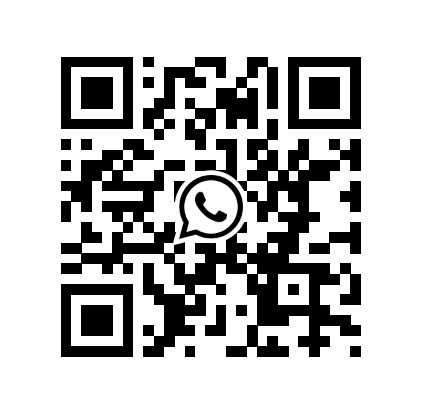Author Guidelines
In order to make an article published in Jurnal Ekonomi dan Bisnis Islam (JEBI), the author should take some guidelines into account, as follow:
- The article to be submitted must be the article that has never been published or submitted anywhere.
- Articles are a conceptual paper or research results in the field of: islamic economics, islamic banking and finance, islamic economic management, islamic economics law, management Zakat Infaq Shodaqoh Waqf (ZISWAF), islamic entrepreneurship and business, islamic economics thought, islamic insurance, and islamic accounting.
- Since Maret, 2021, every article to be submitted in Jurnal Ekonomi dan Bisnis Islam (JEBI) is allowed to be written in either English or standard Arabic.
- The article includes 11–30 page or 5000-9000 words manuscripts (written on letter (A4) paper with Polino Linotype 12 point 1,15 space on two columns)
- The article is submitted at http://ejournal.
- The manuscript is typed by considering the use of standard languages, punctuation, and spelling based.
- The author should previously register as Author and/or reviewer in http://ejurnal.uij.ac.id/index.php/jebi/user/register. The steps of submitting an article to Jurnal Ekonomi dan Bisnis Islam (JEBI) are as follow. The author should do registration on Register menu. Complete all data in register menu. Save the username and password to log in. To submit an article, click new submission.
- Author Fee (Page Charge). Readers will not be charged from the process of reviewing up to publishing the article. Both authors and readers may read and download the full text of each article in free charge.
- The title of the article should be clear (not ambiguous) and identifying the content. The format of the title uses Palatino Linotype 14 Bold, Centered Alignment, and must be Sentence case. It is 12pt spacing (before and after).
- Author and Affiliation. Name Write the author name without an honorary name or degree and should be written in full name. If the authors are more than one person, write all of them. The authors’ names are written under the title. Use Palatino Linotype 12 Bold, Centered Alignment with single spacing.
- The authors’ affiliation is presented using Palatino Linotype 12 Centered Alignment and single spacing. The affiliation is written in full name (not abbreviation) includes the name of department, the name of faculty, the name of university, and complete address.
- The abstract is written in both English and Bahasa Indonesia. It should contain the primary issues of study, the purpose of the study, the method or approach, and the result of the study. The abstract should be in one paragraph with no more than 100-200 words containing: background, purpose, method, result, and conclusion. It uses Palatino Linotype 11,5, and space 1,15.
- Keywords It is a maximum of 5 keywords in English and Bahasa Indonesia with very clear meaning. The keywords are separated by a semicolon (;).
- The introduction contains the background of the problem, a brief explanation of the literature review from the existing research (state of the art), to show the limitations of previous research, what things are to be achieved and show the novelty of the article. The background must be relevant and delivered systematically, the research objectives must be written. The typeface used in the body of the article is Palatino Linotype 11,5, space 1,15. Quotations are written with indirect quotations (paraphrasing). Literature review of at least 10 relevant and most recent references (journals).
- The research method must be clearly and appropriately conveyed and contain a research design, population, sample, data collection method, and data analysis method, written with Palatino Linotype 11,5, space 1,15. Conceptual articles/literature studies do not need to write research methods.
- Result and Discussion. The results of the study in the article contained descriptive data analysis results written in Palatino Linotype 11,5, space 1,15. The results of activities can be supplemented by tables, graphs (figures), and or charts. The discussion section describes the results of activities, results of data processing, interpret findings or benefits logically, linking with relevant reference sources. The number of tables and figures in each article is limited to a maximum of three (3) pieces. Tables and figures should be made in the black and white format, except if the use of black and white can reduce the meaning or information to be conveyed, colored images or tables may be used. The discussion presents each research findings/analysis of research results compared with the theory or results of previous relevant research, or with reality in the field, comments and logical analysis from researchers.
- The figures are numbered in the order in which they are presented (Figure 1, etc.). The source of the figure is written below the figure. The title of the figure is placed under the figure with the center position (center justified). The explanation of the figure must be written in the narrative of the article.
- The tables are numbered in the order in which they are presented (Table 1, etc.). The source of the image is written below the table. Writing I in the table is written with the letters Palatino Linotype 10 single space. The title of the table is written at the top of the table in a center justified position like the example in Table 1 below. The explanation of the table must be written in the narrative of the article.
- Math Equations. Mathematical equations are written clearly with Microsoft equation. The formula is written protrudes to the right 1 cm and is numbered. An explanation of the equation must be written in the narrative of the article.
- It contains conclusions, suggestions, limitations, and further research. Conclusions are conveyed clearly and describe the answers to the hypothesis and/or research objectives or findings obtained in the study. Conclusions are presented in the form of a description, not numerical and based on in-depth analysis. Suggestions present things that will be done related to further ideas from the research. Limitations and further research must be clearly stated.
- Everything that is referred to in the text goes to the reference list and everything on the reference list is indeed referred to in the text. The bibliography must contain relevant references from primary sources (scientific journal articles and a minimum of 60% of the total bibliography) and be published in the last 10 (ten) years. Writing scripts and citations referred to in this manuscript are recommended using reference applications (reference managers) such as Mendeley, Zotero, RefWorks, Endnotes, etc. The format of writing a bibliography uses Turabian 8th edition. The reference source writing format follows the following example. As an example:
Book:
Caiden. (1982). Public Administration, California: Second Palisades Publishers Pacific Palishades.
The Translation Book:
Chalmers, A. F., Apa itu yang Dinamakan Ilmu? Suatu Penilaian tentang Watak dan Status Ilmu serta Metodenya, terj. Redaksi Hasta Mitra (Jakarta: Hasta Mitra, 1983), 26.
Books binding:
Nadîm Marghalî dan Usâmah Marghalî, al-Murshid ilâ Kanz al-‘Ummâl fî Sunan al-Aqwâl wa al-Af‘âl, Vol. 1, Ḥadîth ke-2454 (Beirut: Muassasah al-Risâlah, Cet. Ke-3, 1989), 121.
Articles in Book:
Sarjuni, “Anarkisme Epistemologis Paul Karl Feyerabend”, dalam Listiyono Santoso dkk, Epistemologi Kiri(Yogyakarta: ar-Ruzz, 2003), 155.
Articles in the Encyclopedia:
Samsu Rizal Panggabean, “Dîn, Dunyâ, dan Dawlah” dalam Ensiklopedi Tematis Dunia Islam, Vol. 6 (Jakarta: PT Ichtiar Baru van Hoeve, t.th.), 50.
Articles in the Journal:
‘Abd al-Amîr Zâhid, “al-Khiṭâb al-‘Almânî al-‘Arabî al-Mu‘âṣir: Târîkhîyatuh wa Bunyatuh al-Mawḍû‘îyah” dalam al-Minhâj, Vol. 27 (Kairo: Muassasah al-Ahrâm, 2002), 14.
Articles in people's media:
Muhammad AS Hikam, “NU dan Gerakan Civil Society di Indonesia”, Suara Pembaruan, 03 Agustus 1994, 1.
Articles in Internet:
Hâshim Ṣâliḥ, “Jamâl al-Bannâ bayn al-Iṣlâḥ al-Dînî wa al-Tanwîr” dalam www.assyarqalawsat.com/24-Mei-2004/diakses 20-Juni-2008.
Essay, Thesis, and Dissertation:
Thoha Hamim, “Moenawar Chalil’s Reformist Thought: A Study of an Indonesian Religious Scholar (1908-1961) (Disertasi--McGill University, 1996), 81.
Scripture:
al-Qur’ân—QS. al-Fâtiḥah [1]: 4.
Writing articles in this Iqtishoduna Journal uses Arab-Indonesian transliteration guidance as in the guidebook set by the Syariah Economic Study Program Faculty of Islamic Economics and Business The Islamic Institute Syarifuddin Lumajang as follows. namely: ب (b), ت (t), ث (th), ج (j), ح (ḥ), خ (kh), د (d), ذ (dh), ر (r), ز ), (Ṣ), ض (ḍ), ط (ṭ), ظ (ẓ), ع ('), غ (gh), ف (f), ق (q ), ك (k), ل (l), م (m), ن (n), و (w), ه (h), ء ('), and ي (y). To show a long live sound (madd) by writing a stroke above the letters â, î, and û. The double live Arabic (dipthong) is transliterated by combining two ay and aw letters, such as layyinah, lawwâmah. The word ending in ta' marbûṭahand functioning as ṣifah(modifier) or muḍâf ilayh is transliterated with ah, such as akhlâq karîmah, faḍâ'il al-zakâh, while functioning as muḍâf is transliterated with, like jannat al-na'îm.








